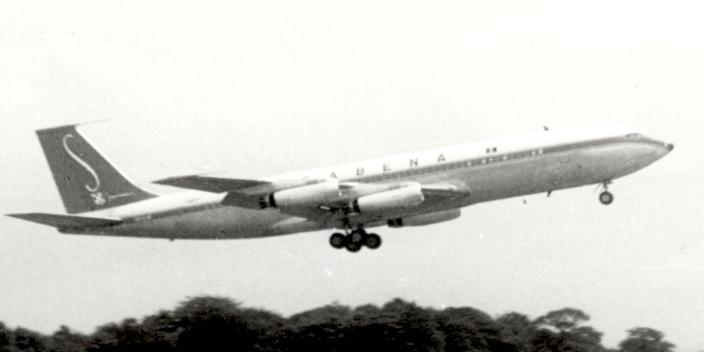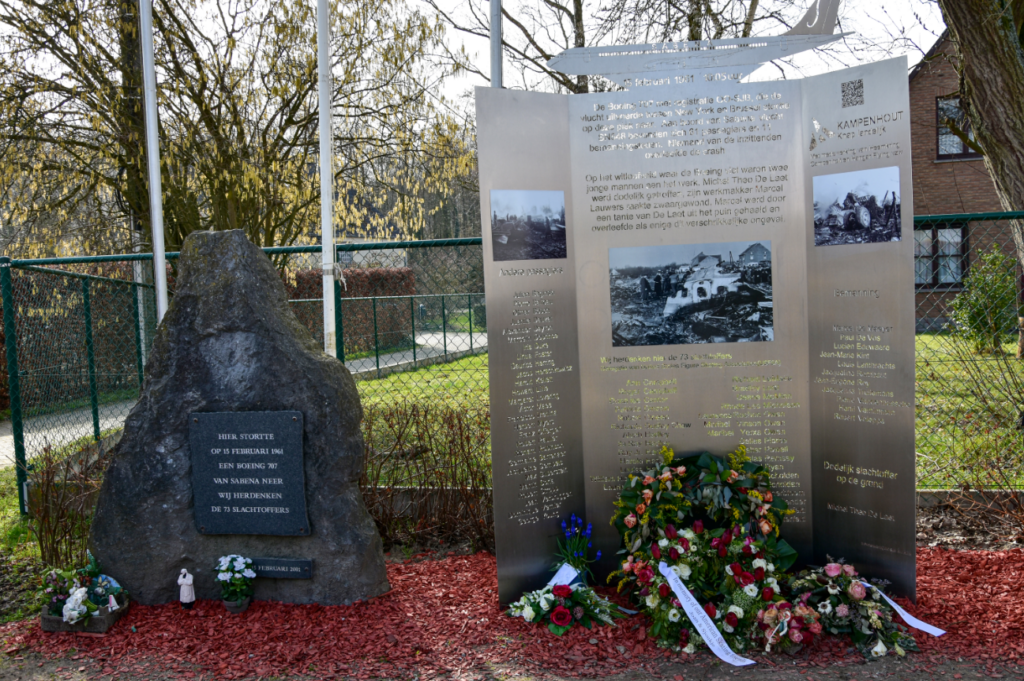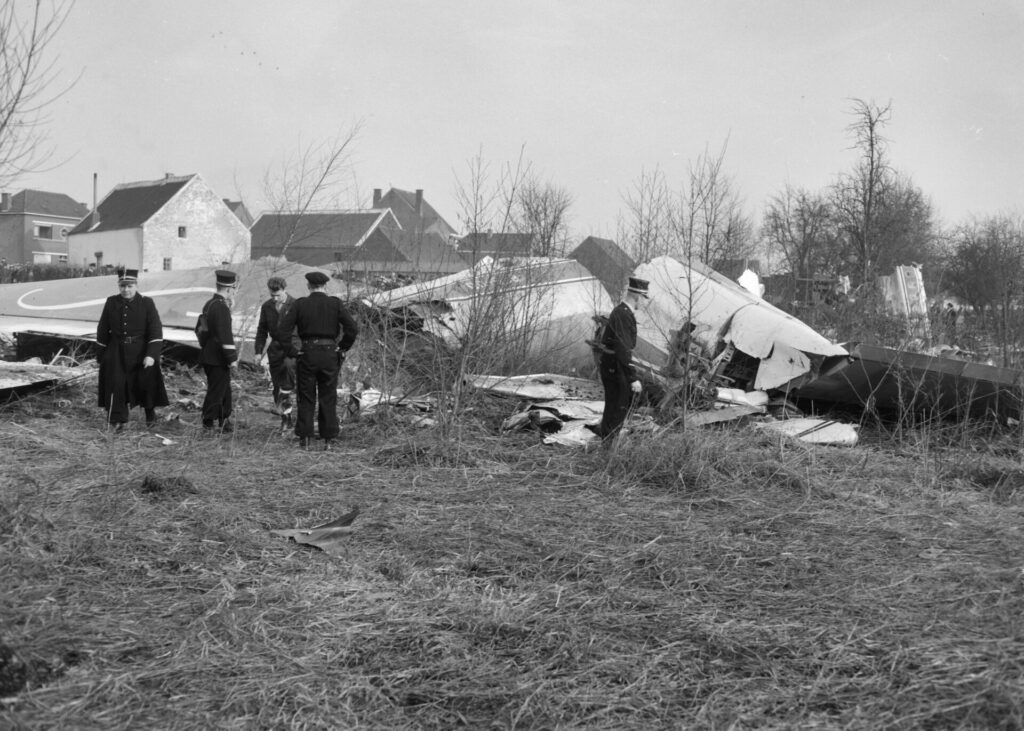On this day, 15 February 1961, a Belgian aeroplane – Sabena's Flight 548 – en route from New York City to Brussels crashed on approach to Brussels Airport, killing all 72 people on board (including the entire United States figure skating team), and one person on the ground.
Flight 548 was a Boeing 707-329 flight operated by Belgian airline carrier Sabena. Having taken off at Idlewild International Airport (later renamed John F. Kennedy International Airport), on board was the entire US figure skating team on their way to the World Figure Skating Championships in Prague.
To date, it remains the deadliest plane crash ever to occur on Belgian soil. It was also the first time that a Boeing 707 had crashed; the revolutionary long-haul jet aircraft had come into commercial use 2.5 years before. This particular aircraft was one year old.
The exact cause of the crash remains unknown owing to a lack of data to analyse afterwards. The most probable explanation is that the mechanism that adjusts the tail stabilizer failed.
Landing problems
The flight had 11 crew members plus the two pilots, Louis Lambrechts (43) and Jean Roy (48). Both were former military pilots with over 15,000 flight hours of experience each. During the 7.5-hour transatlantic flight from New York to Brussels, no difficulties were reported. However, radio contact with Brussels Airport was lost about 20 minutes before approaching to land.
Around 10:00 Brussels time, the Boeing 707 was on a long approach to Brussels Airport's Runway 20 when, at a height of 270 m, power was increased and the landing gear retracted; the aeroplane was forced to cancel its final approach because a small plane had not yet cleared the runway.
After circling the airport, the 707 again tried to land on the adjoining Runway 25, which was not operational. This second approach was also aborted. Witnesses stated that the pilots were fighting for control of the aircraft, making a desperate attempt to land despite the fact that a mechanical malfunction was preventing them from performing a normal landing.
The plane circled the airfield three times and the plane's bank angle gradually increased until the aircraft climbed to 460 m and was in a near vertical bank. After levelling its wings, the plane pitched up abruptly, lost speed and spiralled rapidly, plunging nose-down into the ground less than 3 km from the airport at 10:05.

The Boeing in question, photo taken in April 1960. Credit: Wikipedia
The plane crashed in a marshy area adjacent to farmland near the municipality of Berg, about 6 km outside of Brussels. Eyewitnesses said that the plane exploded when it hit the ground. They also described heavy black smoke emanating from the wreckage, which had burst into flames.
A young farmer who was working in a field near the crash site Theo de Laet, was killed by a piece of aluminum shrapnel from the plane. Another field worker, Marcel Lauwers, was struck by flying debris. His leg had to be partially amputated.
A local priest, Father Joseph Cuyt, who had been observing the aeroplane's difficulties as it approached the airport to land, rushed to the scene but could not cope with the intense heat of the fire. While airport rescue vehicles arrived at the crash site almost immediately, the plane was already engulfed in flames.
After the crash
The Belgian Government immediately ordered a full inquiry into the accident. The Belgian national authorities, the United States Federal Aviation Administration (FAA) and the International Civil Aviation Organisation (ICAO) conducted an investigation and investigators spent several months examining the evidence. The FBI reportedly considered the possibility of terrorism.
While the authorities eventually agreed that the most likely explanation was a mechanical failure of one of the flight-control mechanisms (probably a malfunction of either the wing spoilers or the tail stabilisers), the exact cause of the crash was never fully determined.

Memorial at the site of the crash. Credit: Wikipedia Commons
After the crash, the organisation of the World Figure Skating Championships in Prague initially said that the event would go ahead, but the International Skating Union (ISU) conducted a poll the next day and voters elected to cancel the event.
A telegram was sent from ISU headquarters reading: "In view of the tragic death of 44 [sic] American skaters and officials, the 1961 world championship will not be held."
The figure-skating team was mourned across the US and national newspapers carried the story on front pages. The disaster prompted US figure skating executives to ban teams travelling to international competitions from flying together – a rule still in place today.
"Today in History" is a historical series brought to you by The Brussels Times, aiming to take you on a trip down memory lane for newcomers and Belgians alike, written and compiled by Ugo Realfonzo & Maïthé Chini.

